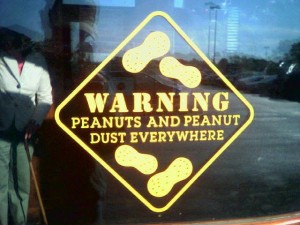Food Allergies and Health Insurance
Aug 1st, 2013
Here we are in August at the height of summer. It’s that special time of year for relaxation in the sun and BBQ’s, the quintessential American way of life. But with outdoor food and fun, that also means more opportunities for exposure to allergy causing foods.
Tragic Result of Food Allergies
The tragic story this week, about a 13-year-old girl in California, Natalie Giorgi, who died after eating a snack with peanuts while camping with her family illustrates this point. Giorgi had a severe peanut allergy, and was always very diligent about it, according to reporting on her death by CBS News.
The snack was a rice krispie treat topped with peanut butter. It was dark, and she misread the packaging when she opened it up and took a bite. Despite immediately spitting it out and her parents administering several doses of allergy medications, including benadryl and epinephrine using an EpiPen, it was not enough. Giorgi lapsed into anaphylactic shock, then cardiac arrest and died.
For many parents this is a worst nightmare situation that they live in fear of on a daily basis. Severe peanut allergies and food allergies in general appear to be on the rise in the United States. It’s estimated that there are about 12 million people in the U.S. who are allergic to some kind of food. That number breaks down to about one in 25, or four percent of the population.
The most common allergy causing foods are eggs, milk, peanuts, tree nuts, soy, wheat, shellfish and fish. Among children the most common allergens are peanuts, hence why the peanut free table has become a new fixture in American public school lunchrooms.
While most of these allergies are not as severe as Giorgi’s they all still require that parents and children be constantly vigilant. That vigilance is costly though. It’s estimated that caring for these food allergies costs the nation nearly $12 billion a year, which breaks down to about $4,000 per child.
The hidden cost of Food Allergies
Most of that money comes in the form of lost wages by parents who must drop down to part-time or leave the workforce altogether to care for their child’s food needs full time. But another substantial piece of that number comes from direct medical costs and out of pocket expenses.
Having health insurance for your child with food allergies is essential to avoiding potentially huge medical bills from an unforeseen medical emergency. Coverage for prescription drugs and coverage for emergency care are the two biggest things to look for in a plan for your allergic child.
Luckily starting next year as part of the Affordable Care Act, all health insurance plans will need to provide coverage for emergency care and prescription drugs. The ACA has also been helping children with food allergies get health insurance since 2010 when it barred insurers from denying coverage to children with pre-existing conditions, which includes food allergies.
Related posts from our blog:
No related posts.
Tags: affordable care act | allergies | food allergies | health insurance | peanuts
Posted in: Simon Bukai | Comments Off
